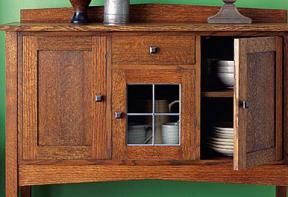What will winter do to your wood?
A comprehensive guide to calculating seasonal wood movement
It’s not the measuring, cutting or finishing that makes designing and building hardwood furniture so challenging; it’s the phenomenon of seasonal wood movement, which would be irrelevant if wood expanded and contracted by the same rate in all three dimensions. But the rate of movement in width, thickness and length are all different; they also vary by the cut of lumber: flatsawn, riftsawn or quartersawn. Ignoring wood movement is a disaster waiting to happen. Warping and cracking will turn a beautiful design into a flea-market special in a hurry. The key to successful design, aside from aesthetics, is understanding and accounting for seasonal wood movement.
The basics
First, it’s important to understand what the terms flatsawn, riftsawn and quartersawn mean. Flatsawn wood has U-shaped growth rings that run roughly parallel to the wide face. Riftsawn growth rings run on a 45° angle. Quartersawn lumber has vertical growth rings, running perpendicular to the wide face.
The most important point is that wood moves more along the growth ring than it does across it–roughly twice as much. So, a flatsawn board moves more in width than riftsawn or quartersawn lumber because the growth rings run roughly parallel to the wide face. Quartersawn lumber moves more than flatsawn in thickness, although it is still only a tiny amount if the board thickness is just 3/4″. Riftsawn moves less than flatsawn in width, but more than quartersawn.
Jump to a section
To leave a comment, please log in












No comments